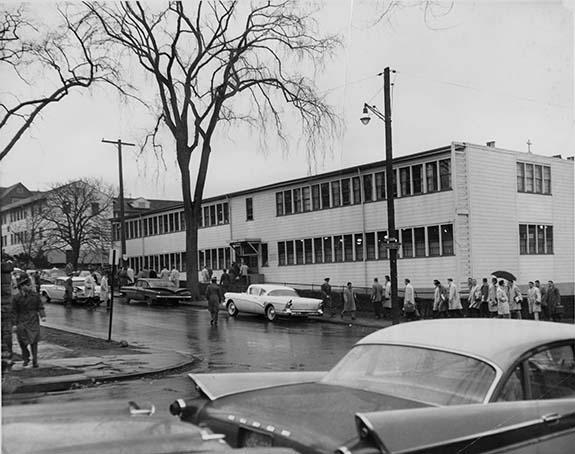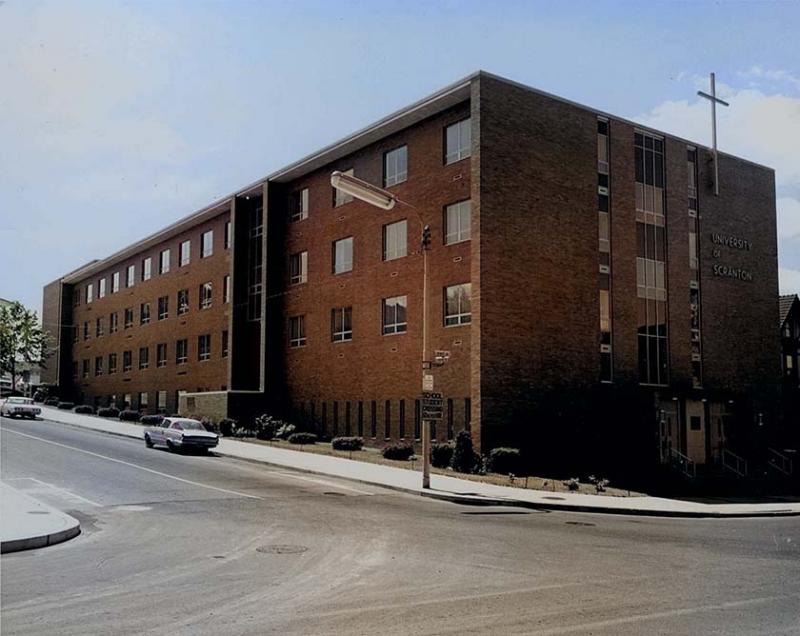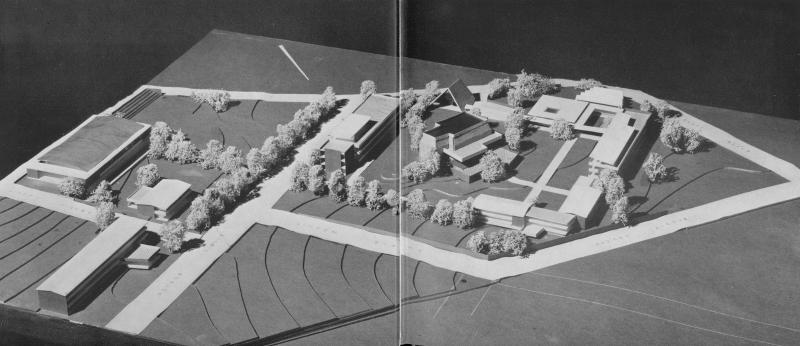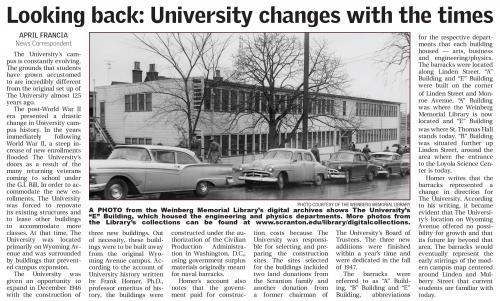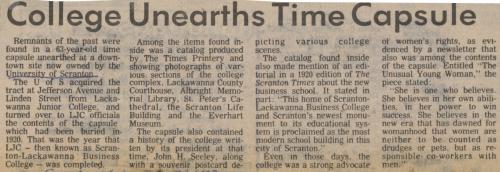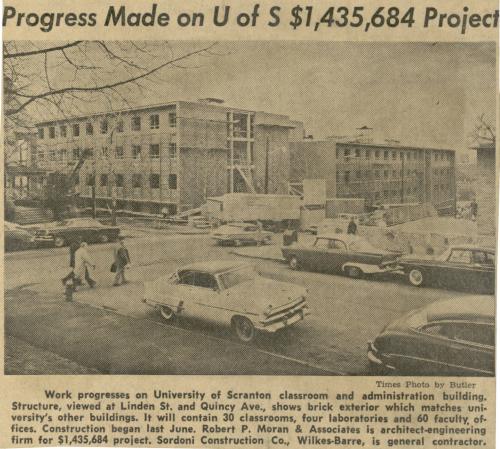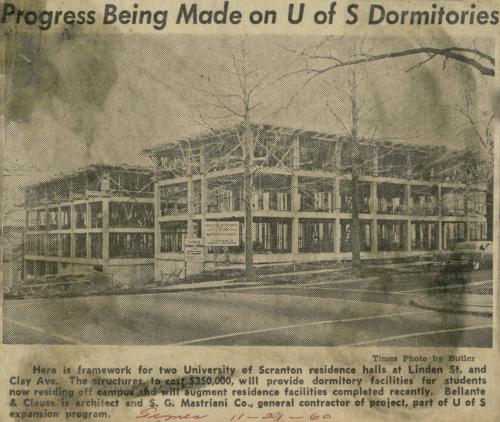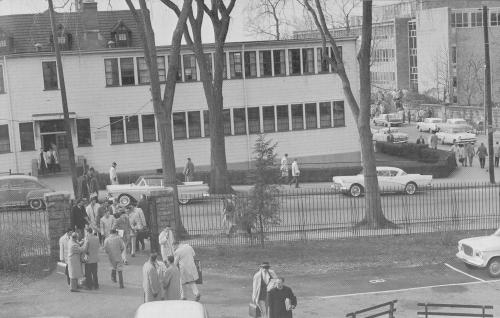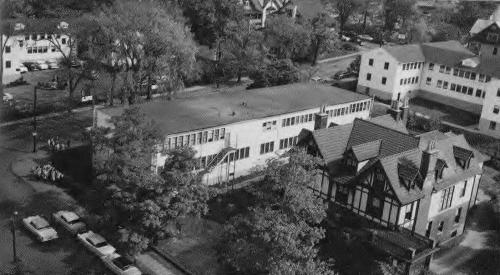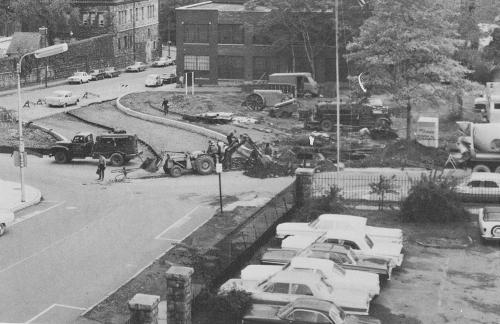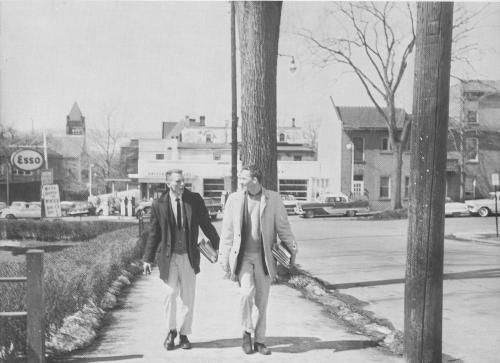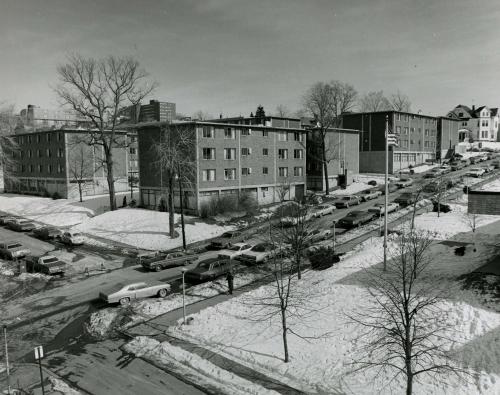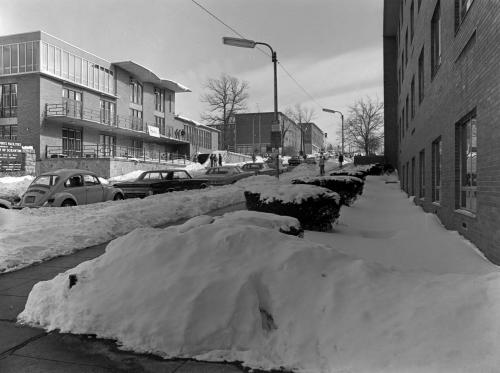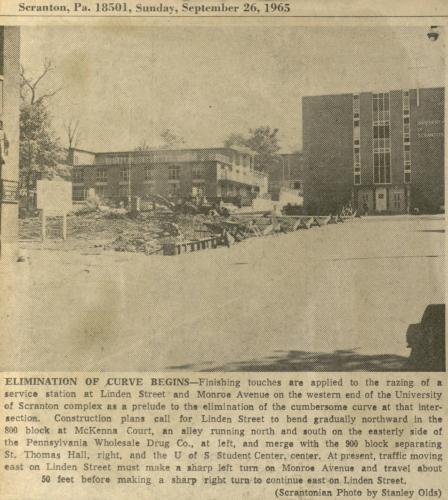The University of Scranton Barracks (Engineering, Arts, and Business Buildings)
The University purchased three Navy barracks after World War II to help accommodate the influx of students enrolled on the G.I. Bill. Known as the Arts, Engineering, and Business buildings, the barracks were used as classrooms and administrative offices from I941 to 1962. In the late 1950s and early 1960s, the University undertook a major building program and replaced the barracks with new construction, including St. Thomas Hall. Rather than being demolished, the buildings were dismantled and relocated to St. Jude's School in Luzerne County to be used as a cafeteria, library, and kindergarten. They were eventually demolished in 1985.
Engineering Building and St. Thomas Hall
In 1954, the University's planning board developed a campus expansion plan that included nine new buildings and the removal of the barracks. In 1961, the Engineering building became the site of St. Thomas Hall, a new $1,700,000 classroom and administration building on the corner of Linden Street and Monroe Avenue. The University conducted several fundraisers to complete the construction of St. Thomas Hall, a new campus library, and a student center which were all under construction that year.
Closure of Linden Street and Construction of the University Commons
In 1978, the University proposed closing two blocks of Linden Street to integrate the street into its campus master plan and create the University Commons. The University’s design included construction and development of Linden Street between Monroe and Clay Avenues with landscaping, a 24-foot wide brick serpentine lane, utility easements, and new lighting (Commons Outline Plan and Specifications). The University’s plan received strong support from the Scranton Chamber of Commerce, Community Medical Center, Fire Department, Scranton Times, Lackawanna County Regional Planning Commission, Scranton Commercial Association and others.
However, in a poll conducted by The Sunday Times, 48% of Scranton residents opposed the closure, mainly due to concerns about increased traffic congestion and limiting access for emergency services. About 30% of residents supported the plan, while 22% were undecided. Following the poll, the city indefinitely postponed action on the University’s request. Then, in 1979, Scranton city officials decided to allow the University to proceed with construction on the Commons project. Mayor Eugene Hickey argued that there was no reason to delay the project, which aimed to attract more students and complement revitalization of the Central Business District. The city’s approval was contingent on the University meeting several conditions including replacement of lost street parking and modifications to improve traffic flow. Construction began in June 1980 following the implementation of a traffic reversal plan for Spruce and Linden Streets.
